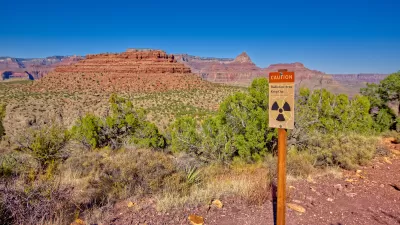Underground steam pipe systems in New York, Boston, and other cities could hold the key to renewable power generation.

A 106-mile network of underground pipes could hold the key to clean energy in New York City.
As Tope Alake and Linda Poon explain in Bloomberg CityLab, the city’s subterranean pipes currently deliver roughly 15 billion pounds per year of 370-degree steam to some of the city’s buildings.
The system, operated by Consolidated Edison Inc., serves large-scale clients such as the Empire State Building and the United Nations complex. “For now, Con Ed’s steam system is entirely focused on Manhattan, where the main steam pipes already exist. Expanding into other boroughs would require crossing a river, making it much more challenging — though not necessarily impossible for a company that owns small pieces of real estate in other boroughs.”
Now, new legislation and a focus on renewable energy could lead to an expansion of the steam system and allow buildings to decarbonize using their own boilers.
While New York’s system operates on natural gas, “Many of the US’s other systems, sometimes called ‘steam loops,’ are also working to decarbonize. Vicinity Energy Inc., which operates systems in a dozen US cities, has committed to electrifying its entire portfolio by 2050 — including in the greater Boston area, where its steam pipe system delivers heat to some 70 million square-feet of building space.”
FULL STORY: NYC's Underground Steam System May Be Key to a Greener Future

Planetizen Federal Action Tracker
A weekly monitor of how Trump’s orders and actions are impacting planners and planning in America.

Restaurant Patios Were a Pandemic Win — Why Were They so Hard to Keep?
Social distancing requirements and changes in travel patterns prompted cities to pilot new uses for street and sidewalk space. Then it got complicated.

Map: Where Senate Republicans Want to Sell Your Public Lands
For public land advocates, the Senate Republicans’ proposal to sell millions of acres of public land in the West is “the biggest fight of their careers.”

Maui's Vacation Rental Debate Turns Ugly
Verbal attacks, misinformation campaigns and fistfights plague a high-stakes debate to convert thousands of vacation rentals into long-term housing.

San Francisco Suspends Traffic Calming Amidst Record Deaths
Citing “a challenging fiscal landscape,” the city will cease the program on the heels of 42 traffic deaths, including 24 pedestrians.

California Homeless Arrests, Citations Spike After Ruling
An investigation reveals that anti-homeless actions increased up to 500% after Grants Pass v. Johnson — even in cities claiming no policy change.
Urban Design for Planners 1: Software Tools
This six-course series explores essential urban design concepts using open source software and equips planners with the tools they need to participate fully in the urban design process.
Planning for Universal Design
Learn the tools for implementing Universal Design in planning regulations.
Heyer Gruel & Associates PA
JM Goldson LLC
Custer County Colorado
City of Camden Redevelopment Agency
City of Astoria
Transportation Research & Education Center (TREC) at Portland State University
Camden Redevelopment Agency
City of Claremont
Municipality of Princeton (NJ)





























